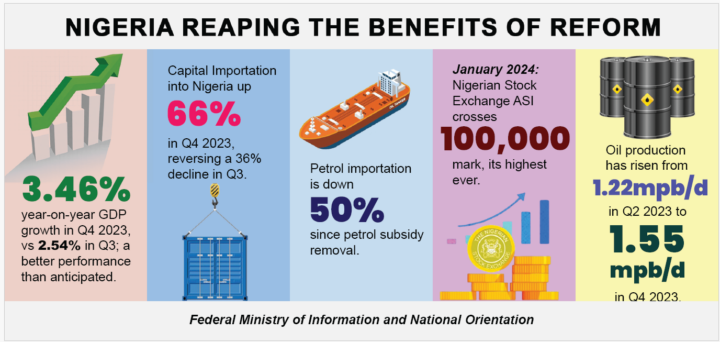HAFSA Isma’il, clenching her newborn – six-days-old baby girl – in her hands, recounted her week-long ordeal in Gandun Sarki IDPs camp; her traumatic condition can easily be traced on her face.
She gave birth on September 20, just a day before the flooding submerged their entire community, Ganuwar Kuka, a suburb of Hadejia town in Jigawa.
Hafsa also has three other children that are too young to navigate over the marauding waters, “I placed the newly born baby on my head, other kids on my shoulders and back, that’s how we narrowly escaped being drowned, because the water was up to my chest”.
READ: TheICIR Celebrates 10th Anniversary, Holds Media Sustainability Conference
Her arrival at the camp was not the end of her trial. Her baby and other kids all sleep beside her on the bare floor, and often with empty stomachs,
“We sleep on a bare floor” she said. “because we lost all our belongings. That’s why we need food, mats and also drugs”.
She said the pathetic condition they are going through could not be quantified; their houses at Ganuwa were all shattered by the flood.
During The ICIR visit, the victims were on their fifth day in the camp, and it was obvious that Hafsa was not the only woman that is in desperate need of urgent help – several others in the camp shared a similar tragedy.
Rahama Isah, the mother of a one-month-old baby and Hauwa Abubakar, the mother of another 6-day-old baby, corroborating Hafsa said they sleep on the bare floor, most times with empty bellies.
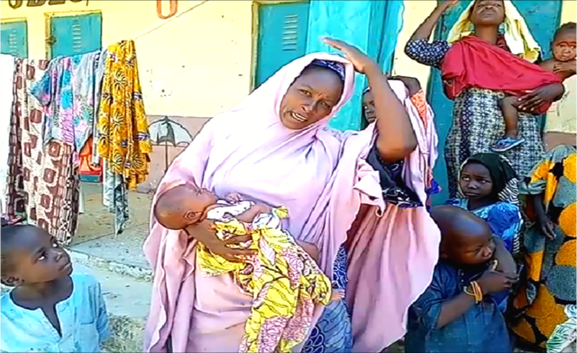
Hawwa Adamu was at the Kiyawa GDSS camp for over five weeks at the time of the visit. Her 14-year-old son Mohammad Awwal and his two other sisters fell sick a few weeks before the flooding submerged her community, Sangayawa, in Kiyawa LG.
The sisters survived the ailment, but Awwal passed on,“he died in Jeji hospital 15 days prior to The ICIR visit she explained.
READ: Displaced from Niger, Taking Refuge in Kwara — Travails of Flood-ravaged Residents
She said although he fell sick before they arrived at the camp, but it exacerbated as she couldn’t access proper treatment, coupled will lack of food and bad drinking water.
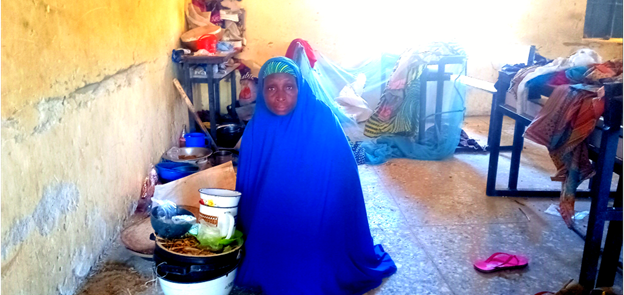
The woman said most of the other women in the camp opted for menial work to survive while she has to stay back and mourns her son.
She has expended the money she has on drugs, food and mosquito nets.
The coordinator at Gandun Sarki camp in Hadejia, Zainab Saleh, said many of the displaced persons could not rescue their belongings as such they depend on goodwill from the host community and philanthropists to survive.
She said the scarcity of food means adults often have to go hungry so that children will eat.
“They mostly get the food from the philanthropists. There are 18 classrooms, and each class has a representative that we work with when they get food,” she stated.
Saleh explained that there are 30 people in a classroom and each classroom were given only three mats and three blamkets. These is grossly insufficient she lamented.
Moreso, the lack of adequate toiletry has led to open defecation, which is now rampant around most of the camps.
Victims lament losses
Even though the situation in the camp – schools – is not palatable, not all displaced person still have access as some have to make do by sleeping on the roadside, Mu’azu Zangina, the representative of Sangayawan Gabas community head in Kiyawa LG, noted.
Zangina who lost two houses, said at least 1000 other houses were affected too. Some of the flood victims who are more fortunate stay in rented apartments or stay with relatives.
He explained that the flood washed away their farms as “some crops became stalks while others were still submerged in water.”
“They warned us, but this community was existing here for over a hundred years, we have never experienced flooding here even during our parents’”, he said explaining why they dod not evacuate on time dn heed the warnings from Nigerian Meteorological Agency (NiMeT).
READ: Motorists, Passengers Stranded on Flood-ravaged Kogi Highway
At the time of the interview, the title holder sais they got food aid once from the Jigawa State Emergency Management Agency (SEMA) “We were also given N500 each from the government some days ago. They gave us 30 sacks of maize which we distributed four cups each, that could only take us maybe a day”.
A resident of Sangayawa, Haruna Yahaya said when the ravaging water got into the community, they tried to divert the flow with sacks of sand, when it was becoming glaringly unsuccessful, “we ran back home and took away our children”.
Yahaya, whose family now sleeps in a mosque and some by the roadside, said he lost everything, including several houses.
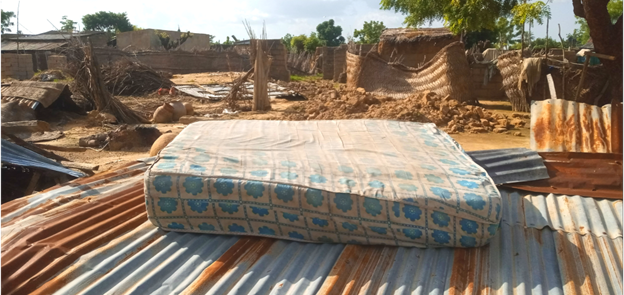
He also confirmed that his community got only five mats and five mosquito nets, which is also grossly insufficient.
Life in camp
Nuhu Sa’idu, an IDP in GDSS Kiyawa, recounted that the flood swarmed Sangayawa in the night as such, he was only able to escape with the cloth he was wearing.
The 72-year-old man who now sleeps on the bare floor in the camp said he spends every money he gets on fighting mosquitoes and it resultant illness.
In Kafin Hausa camp, Idris Abdullahi Zabaro, trekked about 15 kilometres from Auyo, crossing the flooded roads through the perilous bisected bridges; this is a crossing that should have been done with a canoe.
Zabaro was not the only victim that made a night-long voyage, “we were many” he said.
His community also lost houses, property and farmlands to the flood.
READ: Bitagi — A Niger Community Suffering Govt’s Neglect amid Incessant Flooding
He, like many others in camps, now have to seek menial work daily to feed their family.
Cassava flour food aid was given to their camp, but it meant they got only two tins each when it was shared.
He explained that the lack of mattresses means “we sleep on desks” in Kafin Hausa camp.
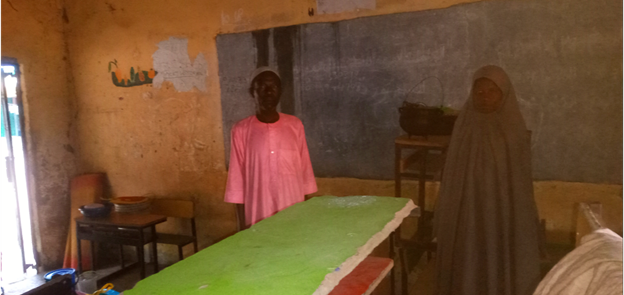
Auyo has, however, has experienced flooding. Therefore some residents evacuated part of their belongings after the NiMeT warning. However, the previous flooding incidents were not on this scale, he explained.
Zobaro stated that despite the wreckage, he preferred returning to his house “because camp life is miserable, now my wife is sick, and she could not get drugs”, he lamented.
At Jura primary school camp, Bala Maigari, a resident of Katijen Galadima in Auyo LG, has been in the camp for over 12 days at the time of The ICIR’s visit. He said he has no alternative but to remain there because “no single house is left in our community. Over 200 households and 200 farms were destroyed, and we could not take anything from those houses and farms”.
Like other victims, Maigari said they get to eat occasionally. “Government – Auyo LG- has brought one sack of cassava flour some days ago, which we shared in teacups”, the food did not last a day however, he thanked their host community for the generosity.
READ: Two Cheats Death, Other Dissappers as Canoe Capsised in Kogi Flood
He added that a health worker had visited the camp a few days before The ICIR’s visit. Even though food is their utmost need, anti-malaria drugs are also at the top of the list, he said.
Residents want permanent safer site
The ICIR’s visit to Kateji showed that the community was flattened by the flooding; the rubbles of the buildings were liquefied by water, and the homeless residents continued to groan. Umar Abdullahi, a resident, said the flooding was the sixth one in the area within two decades.
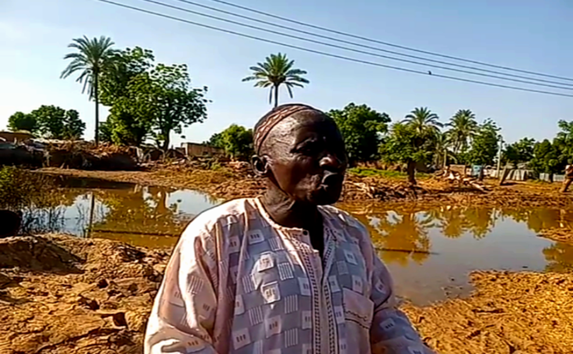
As with residents of Kateji in Auyo and several other submerged communities, Falalu Ado, a resident of Karnaya, a suburb of Dutse, said their dream was to get a permanent safer place or better waterways.
“We want the government to relocate our community to another permanent and safer place or provide good drainage for the water to freely pass,” he said.
Gabarin community in Ringim LG was also submerged by the flooding; most of the victims are at IDP camp in Ringim. They also lack of food, shelter and other basic needs.
The community became the confluence of streams, thus, remained a flood-prone area decades ago. Despite the evacuation of some of their belongings to safer places by some residents after NiMeT’s warning, they also suffered At least two deaths were recorded.
Pregnant, delivering while escaping flood
The ICIR‘s visit to the IDPs camps revealed that several pregnant women delivered while in the camp and continued to feel the peril of nursing their newborn babies in mosquito dens – they all share a similar tragic story.
Hadiza Badamasi, a resident of Karnaya, a suburb of Dutse, the capital of the state, had her new baby girl Fatima Badamasi while in the camp.
She said despite government efforts to supply them with needs in the camp, she and other victims suffer the repercussions of the flooding, “we are really suffering; we don’t sleep in the night because we don’t have mats and other materials, and there are mosquitos everywhere”.
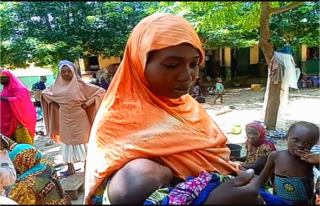
The mother of a 14-days-old baby girl said they could not get the required postnatal care in the camp, in addition, “we need food as well”, she added”.
Similarly, Kaltume Liti went to labour few hours before her community was flooded. “God is so Merciful”, she said. She delivered her baby while in a boat escaping flooding.
She like many other mothers who gave birth in camp did not do the celebrations accompanying birth, her focus is on how to get a meal to eat in a day.
Kaltume is optimistic. She was all smiles during the interview with The ICIR. She is hopeful that one day, she would recount the ordeal to young Dahiru when he becomes older.
Kaltume and other inhabitants of the community would remain displaced for possibly months ahead because their community Kateji was comeptely destroyed by the flood.
Falalu Ado, the spokesperson in the Dutse camp said there were about 15 pregnant women that delivered in Dutse Karnaya camp. “we have about 15 women delivered in the camp.
He said the food and medication provided in the camp are yet to serve the 4000 victims in the camp, especially the nursing women who he said are more in need of urgent assistance.
Hajiya Saleh, the coordinator of Hadejia camp while explaining, noted that about five pregnant women have delivered in Gandun Sarki camp. She said they are in serious need of food and regular medical assistance. “We have just taken one of them to the hospital, she is there currently in labour”.
She stated that a health staff visited the camp and once gave some of the victims some drugs, “but was not enough and they need food and mats because they are sleeping on a bare floor”
Dutse camp gets more attention than others
Abdullahi Sulaiman, a resident of Karnaya, a suburb of Dutse, has been at the Dutse camp for about a month ago, noted that the flooding destroyed over 750 houses in the area.
However, he said farms were not so much destroyed compared to their residential houses. The 55-year-old man recounted that they tried to prevent the flowing water with sacks of sand when it started, but they could not. “We spent over an hour trying to block the water but it thrashed us”.
He commended the state government, and non-governmental organisations for bringing food and other essential things to the Dutse camp.
READ: Bauchi Gov’s 2023 Running Mate, Jatau, Distributes N50 Million To Flood Victims
The spokesperson in the Dutse camp, Falalu Ado, said both state and Dutse Local Governments, has assisted them in multiple ways.
In addition, he said the state government constructed two more boreholes for them in the camp. He also explained that two additional toilets were constructed, and mattresses were provided for the victims as well.
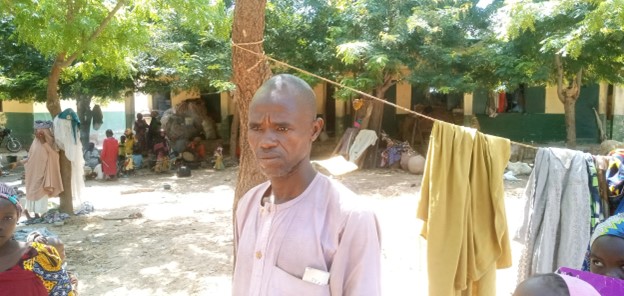
Ripple effect: How flooding is affecting other communities that were not flooded
Falalu said another looming issue in their area is that their children may be thwarted from attending classes for long due to the presence of IDPs in many schools across the state.
“Another problem is schools are resuming, we will either be chased away from this school, or our children will not go to school,” he said.
Substantiating Falalu, Abdullahi Sulaiman, a 73-year-old man in Dutse camp said most of the victims were camped in schools and they may not return home in a few days ahead.
Haruna Yahaya, a resident of Sangayawa in Kiyawa said if the displaced persons remain for long in the camps, it would affect the academic sessions of the pupils and students.
Commuters forced to take longer routes
Most of the roads and bridges linking the capital of the state Dutse and other towns are in tatters, and vehicular movement is halted. Bridges were washed away as well. Commuters take longer and more tedious routes to get to their destinations.
For instance, Dutse – Hadejia road is about 162 kilometres and takes less than 2 hours journey. With the shattered roads and crumpled bridges, Dutse to Hadehia through Kafin Hausa is not motorable. Commuters are compelled to take a longer road which makes them pay double the transport fares.
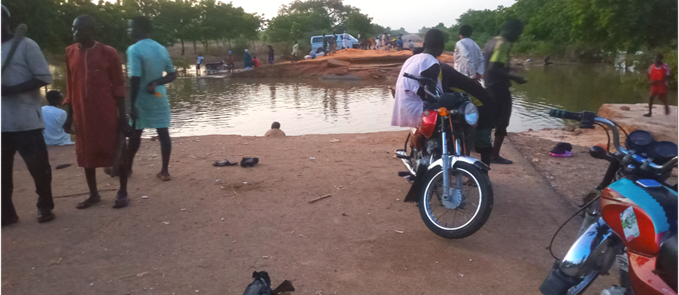
Vehicular movement from Dutse to Hadejia can only be made possible through Dutse – Ringim – Kaugawa – Hadejia, which takes about 300 kilometres and over a 4 hour journey.
The bridge linking Kiyawa and Kafin Hausa was washed away by the flood. Also, the formerly good road and bridges from Kafin Hausa to Auyo turned into a lagoon. Transportation can be possible only through local canoes in a perilous manner.
A road from Dutse to Birnin Kudu (43.2 km) takes about 30 minutes of a vehicular journey, the bridges were also washed away. Commuters navigate through Kangiri village road which was recently fixed, and this takes them over a hundred kilometres and they are compelled to pay exorbitant transport fares as well.
A bridge in Sintilmawa village along the Ringim – Dutse road was a nightmare until it was recently managed. Vehicles were reported to have fallen along the dangerous bridge.
REAd: ‘Over 10,000 Displaced in Niger Flood’
Miga, Taura, Mallam Madori, and Kirikasamma have similar miserable stories concerning the victims of the flood devastation. Roads linking the towns remain in tatters while bridges were washed away.
However, the most arduous need of the victims is their food and shelter “our pressing demand is food; we need food, then the sleeping place” the inhabitants in the camps pleaded”.
Canoe capsized, deaths recorded, as survivors sleep on a tree
To escape the rampaging flood, villagers must cross one type of dangerous water or another, often in local canoes. It was not easy for the victims; most of them left their residences in the night unexpectedly. In the process of crossing for their safety, some of them perished.
For instance, a canoe capsized with the boarded locals from Auyo – three persons died, while other survivors navigated on the deadly waters to climb a partially submerged tree; that was where they spent their night.
Mohammad Jibrin, a canoe paddler, recalled that a day after the flooding, he was one of the rescue team that recovered two of the three corpses and evacuated the survivors trapped down the tree.
He said the victims had experienced a double tragedy, “they were crossing to escape from the flooding when that accident occurred”. The young man said the body of the drowned woman was not yet recovered ten days after.
Government reaction to the situation
The Operation Officer of the Jigawa State Emergency Management Agency SEMA Sabo Ibrahim, said the agency distributed some foodstuff to the victims.
According to Ibrahim, 32 canoes were supplied by the agency in the affected areas and other relief materials were also distributed to the victims in their various camps across the state.
He stated that from July 2022 to September, SEMA recorded 110,189 victims of the catastrophe, where in 237 affected villages, 92 persons were officially captured, and 57,661 persons were displaced.
Taura and Ringim LGs recorded the highest number of IDPs, with 16,682 and 12,332 persons, respectively.
Miga and Kirikasamma have 14 deaths each followed by Kafin Hausa with 11 recorded flooding related deaths.
He, however lamented the logistic problems the agency faces in terms of emergency situations.
“Now the operation vehicles are there with the drivers, and if you want to rush to a particular emergency situation, it may not be possible to be executed as needed.
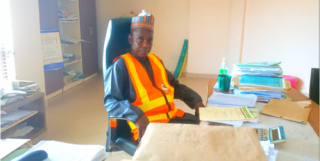
He argued that another problematic issue the agency faces is the lack of reserved resources as proactive measures against emergency situations which, according to him, usually need urgent action.
The climate change factor
The Chairman of Jigawa State Engineers and a resident of the flood-ravaged community Sangayawan Gabas in Kiyawa LG, an engineer, Adamu Garba, argued that the disaster has a connection with global warming as a result of climate change.
He stated that intermittent rainfall, drought, and flooding are some of the effects of climate change which threaten the ecosystem.
He stressed that over 130 households were destroyed by the flood in his community, and many victims are taking refuge at various IDP camps and neighbouring communities.
He called on privileged individuals to redouble their effort towards assisting displaced persons.
Garba said was also affected by the flood “like me personally, I bought about N500,000 fertiliser and expected to get over 100 sacks of rice apart from millet, ground nuts and other crops but now I don’t think I can get 10 sacks, so victims need to be helped.
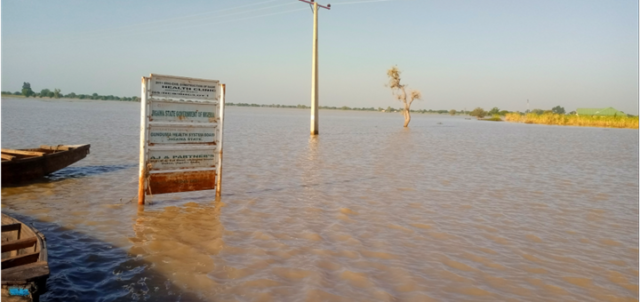
Umar Gambo, Director of Agricultural Service, Jigawa state, corroborated that climate change is responsible for changes in the ecosystem, posing a great concern in the life of a man.
The agricultural expert explained that there are certain activities in the ecosystem causing the changes and inevitably affecting everything in the system in most cases negatively.
Moreover, the Director noted that in some instances, water bodies are being released from neighbouring states comprising the river Jama’are basin, which also causes the overflow of the waters in Jigawa state.
He said Jigawa is an agrarian state with over 1.6m hectares of land, while over 300,800 of the heaters are waterlogged areas.
Surprisingly, according to Gambo, the 2022 Jigawa flooding submerged all the water-logged areas and advanced vastly to upland areas that have never experienced flooding in the history of the state and destroyed as many as possible. “This year, the water advanced not only in water-logged areas. It also destroyed many houses and farmlands in other areas”.
The Director, however, called on farmers to not lose hope but engage in irrigation and also opt for crops that grow fast and in watery places, “like watermelon, cowpea etc.”.
The permanent secretary in the Jigawa state ministry of health, Salisu Mu’azu, said a committee was being established and would be responsible for giving updates on the number of persons confronted with ailments in the camp.
He said the committee would serve as a central body for all the needed updates in regard to the flooding.
A media aide to Jigawa state governor, Habibu Nuhu Kila, told The ICIR that the state government has provided emergency assistance to the victims.
He said they set up a committee that would as well look at other post-flooding needs, which he said would come after the arduous needs are addressed.
He said as preventive measures, the state government distributed thousands of empty sacks to help residents fill sand and barricade the water.
READ: How Flood-ravaged Bridge Gives Residents Sleepless Nights In Jigawa
“We distributed sacks during the flooding, food and drugs as well, and the committee will lead in the rehabilitation of houses and farms destroyed and decide what should be done after”, he noted.
Explaining why the foodstuff claimed to have been distributed was insufficient, the media aide argued that “we can’t provide it all because there are places where the disaster hit more.”.
He said another part of the effort by the state government was the removal of some ‘stubborn’ grasses along the Hadejia area that barricaded the water flow, which according to him, the water now takes not more than three days to drain from the communities.
Kila noted that in addition, the state government has concluded arrangements to buy generators that would help in draining the flooding water if a similar case occurred in the future, “they will arrive in the state in a matter of weeks”, he stressed.
The ICIR flood series document the plights, effects, causes and solutions to the flooding situation that affected most states in Nigeria in 2022.

